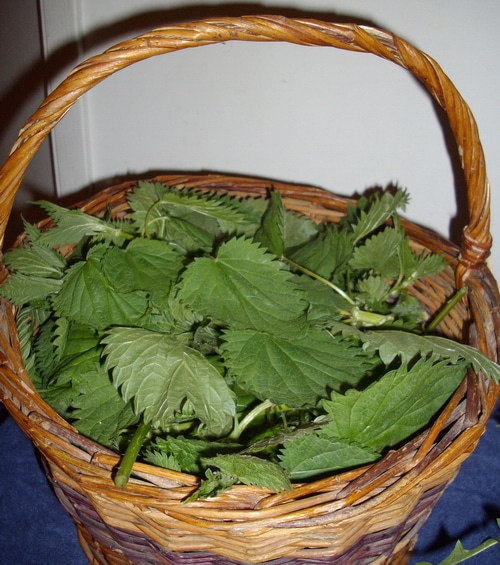Spinning and Weaving with Nettle Fibre — the Urban Spinning Fibre
You can live more sustainably by spinning nettle fibres and weaving cloth for your own clothes.
The linen festival last Saturday was fantastic. I think it was the most enjoyable Linen Festival we’ve had a Joybilee Farm…Thank you to our farm helpers, Kara and Erika, you were both a big help to make the day go smoothly…to Evelyn for coming out for the day to help with the flax breaking, scutching and hackling…to Ian, Miranda, and Dana for supervising the kitchen activities, keeping the coffee going and making lunch. Thank you to Sarah for supervising the craft area and being flexible, filling in wherever you were needed. Thanks to Robin for making my dream of a Fibre Farm a reality — and for sharing your extensive knowledge of the financial aspects of self-sufficiency and homesteading. I’m so blessed to be married to you.
And thank you to all of you for coming out for the day and sharing in our passion for sustainable clothing and self-sufficiency. Your kind enthusiasm made it very worthwhile.
Someone mentioned “Through the Eye of a Needle” during the learn-to-spin linen portion of the day and my curiosity was piqued. I think you will enjoy this video.
John-Paul Flintoff talks about his journey to live more sustainably by spinning nettle fibres, weaving cloth and sewing his own clothes right down to the nettle underpants. I really enjoyed this video and just ordered the book from Amazon.
And Gandhi comes in here as well. Clothing — because it’s essential to life — like food and water — is tied to politics, poverty, and ethics. Wearing clothes is a spiritual action. I haven’t explored this very far but there’s a conviction in my heart that what we wear does matter. And what we do with our hands — our industry — is very important to our spiritual wellbeing, to the health of the planet and to our communities/families. Flintoff bravely leads this exploration.
I like that he is using nettle fibres. One of my books has pictures of a Coast-Salish woman thigh spinning nettle fibres for fishing nets. 10 years ago, I tried to harvest nettles for fibre. I retted them too long and they disintegrated. Then I switched my focus to linen. There is a lot more written about linen fibre, spinning and weaving. This has piqued my interest. I am looking at the nettles growing beside Eholt Creek in a new light this morning.
Nettle leaves are harvested for a mineral-rich tea, for a spring tonic. Early Spring leaves are a spinach-like vegetable — usually able to be harvested before you plant your garden. They are a great addition to compost tea — adding lots of rich trace minerals to your plants. They are also good as a foliar feed for leafy plants.

They are native to most parts of Canada. They don’t need fertilizer, pesticides or herbicides to grow well. And you can wildcraft them — so you don’t need to own land to take advantage of nettle’s bounty. Nettles like water, so you are more likely to find them growing near water — or at the edges of a clearing where the shade trees provide some dew moisture.
Nettles would be harvested for fibre at the end of August to mid-September when the seed heads are formed. Use gloves, they sting. If you do get stung — find some plantain or dandelion leaves — mash them up to release the juice and apply the poultice to the sting. Amazing that plantain and dandelion usually grow near nettles.
Once you harvest the nettles, lay them out on the ground and wet them. Turn them in 4 or 5 days. Layout for another 3 or 4 days. Pick them up and let them dry. The sting will be gone. Wearing gloves — just because they are rough, rub the leaves off the stem and break the stem between your hands — similar to linen breaking. The nettle fibres are shorter than linen but longer than cotton. Nettle is a bast fibre and the fibres reside in the outer stem. You will have to break the inner core to release the fibres.
Comb or Card the fibre and spin it wet like linen. Weave it into a cloth and make your nettle shirt. It will last much longer than cotton because the fibres are long. Amazing.
Here’s the book from Amazon:
Through the Eye of a Needle: The True Story of a Man Who Went Searching for Meaning – and Ended Up Making His Y-fronts
Have you spun nettle fibre? Do you have any tips for our readers? What do you think about the connection between clothing, ethics and spirituality? Have you explored this intersection in your own journey? Leave a comment.
If this is your first time at Joybilee Farm have a look here, to find out what this blog is about and subscribe to our free “purple sheep” newsletter for remarkable people, who want to do what they love where they want to live, in the country. Or use the box at the right of this post.



Teaching them to twine with plant fibers might be more appropriate. I think you’d be dealing with a lot of stinging and complaints. The fibers are very short — not at all like linen.
Do you think this is something that a class of grade 9 students could try? I have never carded but I have spun sheep’s wool with a drop spindle.